While there are more players than ever in the mountain bike suspension game, two companies continue to dominate. Fox and RockShox are ever present at the sharp end of BikeRadar’s annual forks group test.
The RockShox Lyrik and Fox 36 are the flagship trail/enduro forks from the two titanic brands, and both are benchmarks against which all other contenders must be measured. But which takes the crown?
Far from resting on their laurels, both companies have been working hard to make their high-end offerings even better for 2018.
RockShox Lyrik now gets the Debonair moniker. As with its shocks, this means increased negative spring volume in pursuit of a softer initial stroke, with more support built-up after sag. RockShox actually introduced this updated air spring for the model year 2017, so it’s simply a rebadge for 2018.
Fox has made big changes to its air spring for 2018. Using the EVOL nomenclature borrowed from its rear shocks, Fox has significantly increased the negative chamber volume. Again, this is done to soften the beginning stroke, and provide more support after sag.
The new spring also does away with the central rod found in older 36 forks. This reduces friction by getting rid of a dynamic seal and makes installing volume spacers a bit easier.
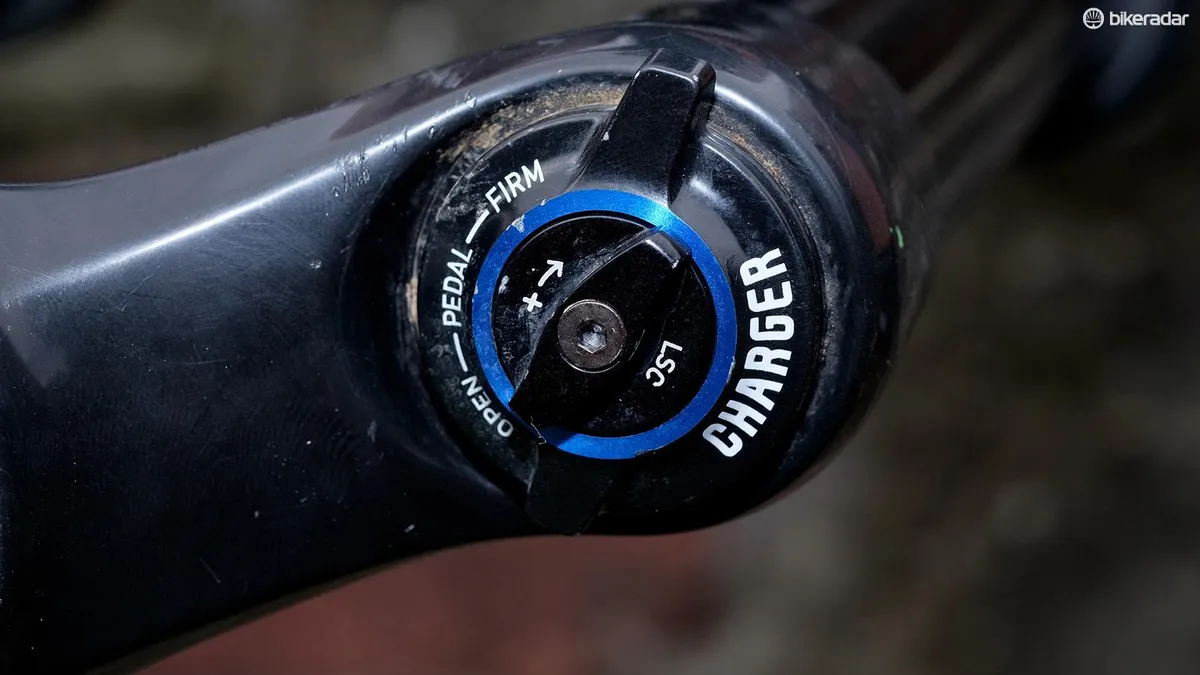
The EVOL spring also does without a top-out bumper; instead relying on negative air pressure to resist topping-out harshly at full extension. In my experience, this doesn’t always work.
Both companies have updated their damping tunes too. RockShox’ Charger2 damper is designed to be more useable than its predecessor. The Pedal and Firm modes now allow a little more movement for use on bumpier trails — the old firm mode was a full lockout.
The dial now takes less force to operate too; this was done to make the dial compatible with a remote. The range of low-speed compression adjustment has been broadened and moved towards the lighter end of the spectrum to reflect the needs of most consumers.
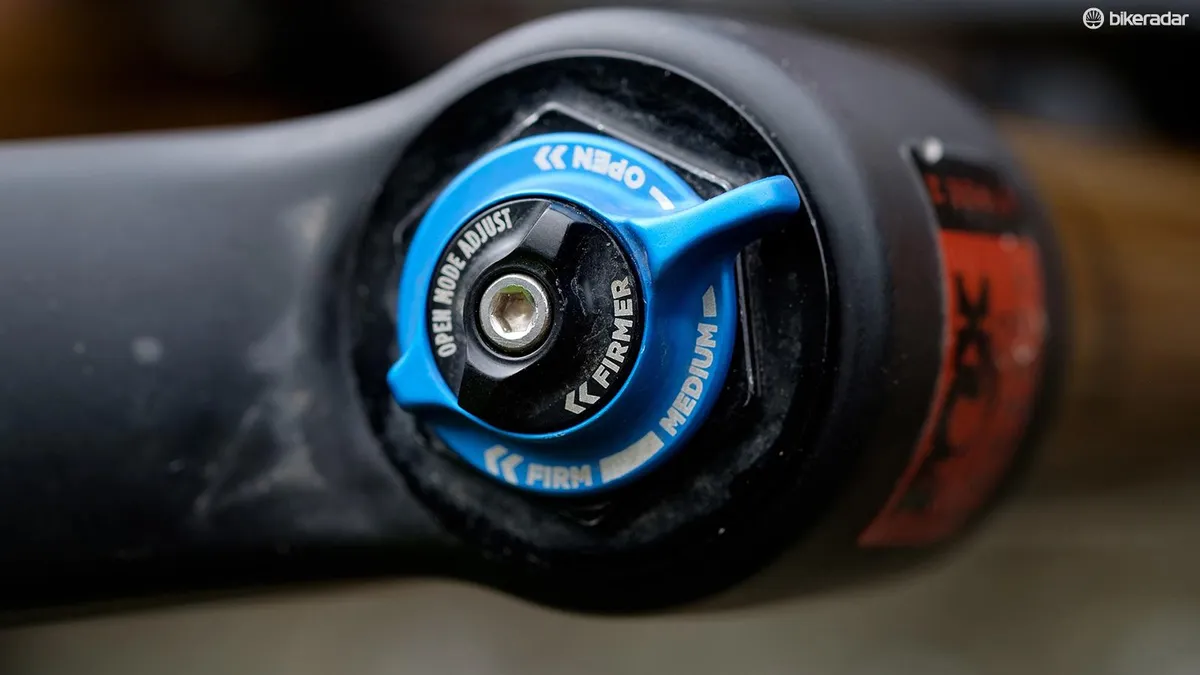
Fox’s FIT4 damper has once again been tweaked for 2018. With the aim of taking the edge off hard impacts, they use a slightly more flexible shim stack than previous iterations to allow a bit more oil flow under rapid compressions. Fox says its EVOL air spring offers more support in the mid-stroke, allowing them to go slightly lighter on the damping side without excessive dive.
Unlike RockShox’ Lyrik, Fox doesn’t currently offer a lockout remote for the 36. On the other hand, some may prefer the firmer (full-lockout) feel of Fox’s Firm switch.
RockShox’ air top cap is now accessed by an internal cassette tool. This improves frame clearance and makes opening up the fork to add or remove volume spacers a little easier. Fox’s 36 still uses a 32mm socket, but now takes just one size of clip-on volume spacer, similar to those used in the 34 and 32. These are a bit easier to understand and install than the system in the old 36.
2018 Fox 36 vs. RockShox Lyrik: vital statistics
I got my hands on one of each of these forks to see exactly how they compare.
Both are 160mm travel, 29” models. The Lyrik is the RCT3 model, while the Fox 36 used was the FIT4 version.
Fox also offer an RC2 model, but that is more expensive and lacks the pedal platform modes of the FIT4. The FIT4 model is therefore a fairer comparison to the Lyrik RCT3.
Here are the basic numbers:
ArraySo, in the UK the Lyrik RCT3 is a bit cheaper than the FIT4 Fox 36, though this is reversed in the USA. The Lyrik also offers more tyre clearance for those who want to experiment with plus rubber.
The recommended service intervals are longer for the Fox and it’s available in a wider range of wheel size, axle and price point options too. It’s also very slightly lighter as well, if that concerns you.
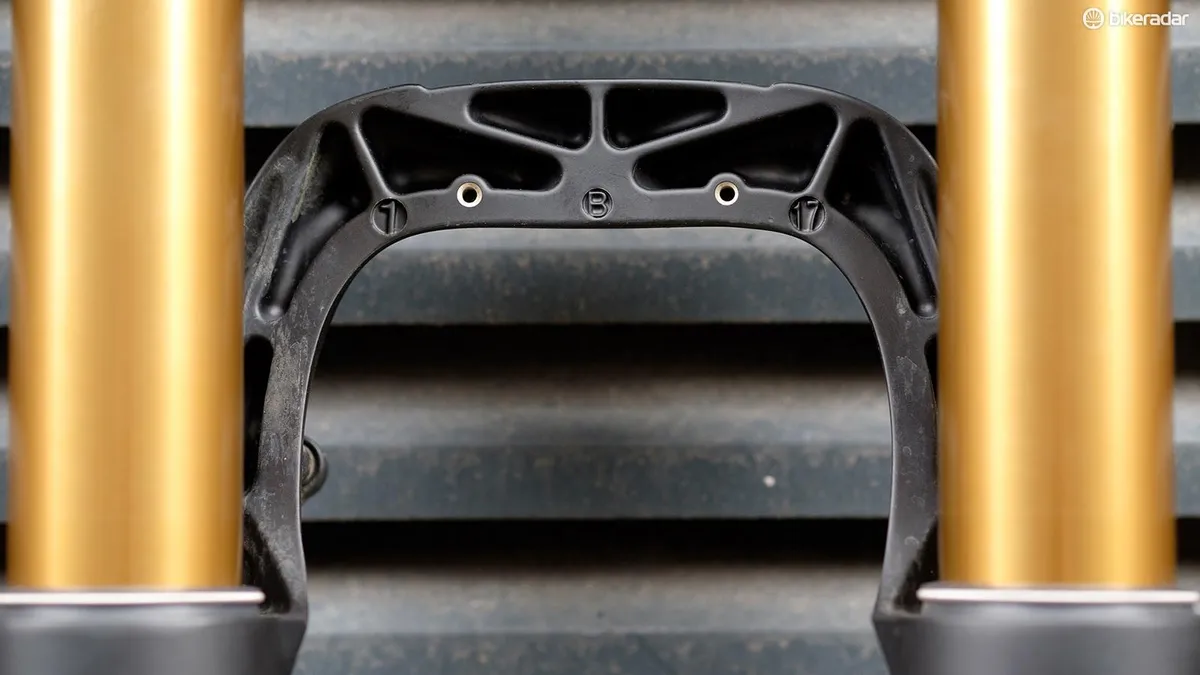
2018 Fox 36 vs. RockShox Lyrik: how we tested
Before doing some back-to-back testing, I put in around 30 hours of riding on each fork (estimated using Strava). This allowed me to experiment with settings to find my ideal setup and to get the forks bedded in.
It’s all well and good for a fork to perform well straight out of the box or freshly serviced, but I feel it’s a more realistic test to see how the forks compare after a bit of use.
When testing the forks individually, it was clear that both forks performed very well indeed. Both felt solid and were able to balance suppleness with a good amount of support. I was able to get a good idea of how each fork performed, but it was impossible to say which, if any, the better fork was without testing them back to back on the same tracks.
To make this a fair test, the first job was to get the set up with both forks dialled and as similar as possible.
With the Lyrik, I found that two volume spacers didn’t quite give me enough support, while three spacers resulted in the fork ramping up too suddenly towards the end of the travel. So, I cut a volume spacer in half, giving me two and a half spacers. I am a fussy bugger.
With the Fox 36, I found that two volume spacers was ideal, offering ample support without a sudden ramp-up.
The most important thing to ensuring a fair test was the spring rate. I found the recommended pressures too soft for both forks, especially the Lyrik. So I adjusted pressures until both forks gave me enough support and felt as similar as possible in terms of spring rate. This resulted in 94psi in the Fox 36 and 96.5psi in the Lyrik.
Measuring sag is inherently difficult with forks due to friction, which causes a stick-slip effect. Nevertheless, I measured sag for both forks as consistently as I could, rolling down a road in the attack position. I did this a few times and both forks showed between 25mm and 31mm of sag when measured this way.
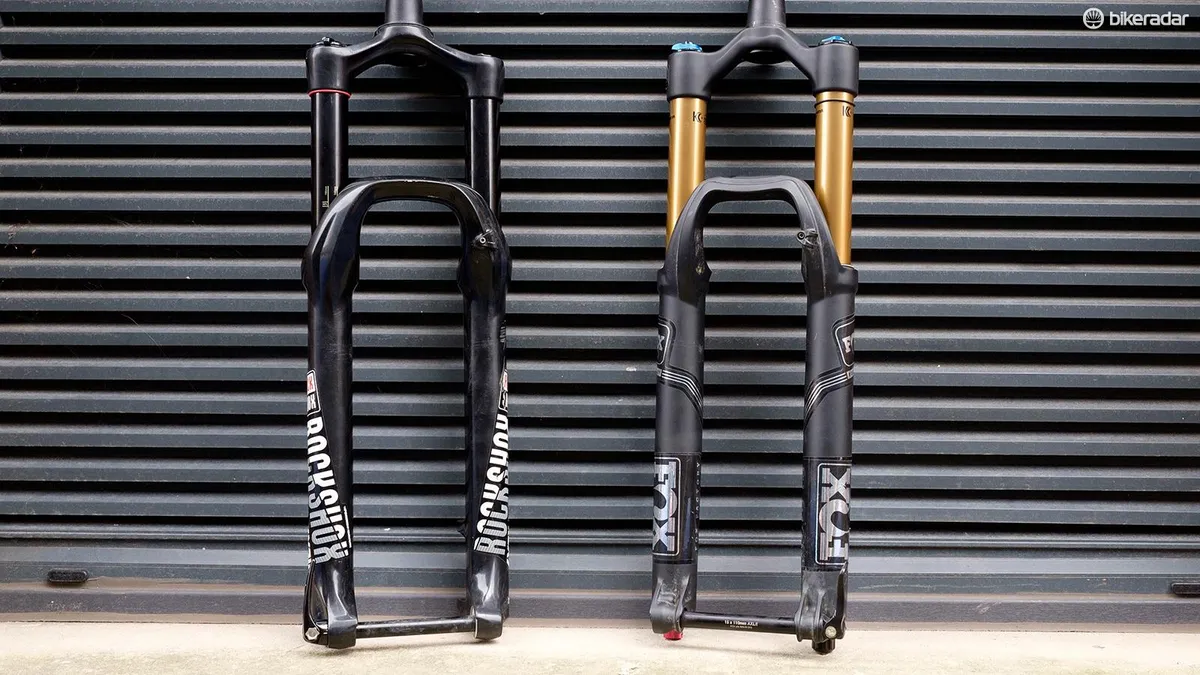
Next was the bounce test: a procedure I often use to gauge how firm and progressive a fork is. This involves bouncing on the fork as hard as I physically can without leaving the ground. Under this test, I was able to get 124mm of travel out of the Lyrik and 126mm out of the Fox 36. Close enough.
With the springs set up as similarly as I could reasonably get them, I set the rebound in my usual way. This involves slowing down the rebound one click at a time from fully open, until the front tyre no longer leaves the ground when the fork is compressed and then released suddenly.
This resulted in seven clicks from fully closed with the Fox 36 and eight clicks with the Lyrik. To double check, I made sure the rebound rate of each fork matched that of my shock, which I didn’t adjust throughout testing.
For this test, I opted to start out with the compression adjusters fully open. This is how I would choose to set up both forks for the terrain in question because it’s not particularly steep but very rough.
2018 Fox 36 vs. RockShox Lyrik: the ride
Battle of the big-hitting forks
My back-back test took place on three main tracks at Bike Park Wales; rocky, fast tracks packed with pitted hard pack surface, braking bumps, berms and g-outs.
I used my regular long-term test bike — a Pole Evolink 140 — and made sure that all settings, including tyre pressures, shock and cockpit setup were identical for both forks.
For those who are au fait with suspension terminology, I think the Lyrik has a more digressive damping curve
One thing that I picked up on immediately when swapping between forks was the off-the-top sensitivity. The Fox 36 felt a little more ‘stuck down’ thanks to a really soft first 20 percent of travel (pre-sag). This made me feel like the front tyre was tracking more reliably on unweighted, drifty corners.
Fox’s EVOL air spring works brilliantly in this sense, but there is a downside. Because there’s no top-out bumper, the 36 can top-out with a noticeable ‘thwack’ if you pull up really hard. This is not noticeable under normal riding through rocks or even jumps, only when yanking on the bars for a bunny hop or sudden manual. I run my spring quite hard and the rebound a little on the faster side, which won’t help matters here.
Interestingly, my colleague Rob Weaver — who runs his fork around 20psi softer than I do — has experienced this issue on a 2018 fork, while another example with an RC2 damper, topped out much less frequently. So it could be an early production issue.
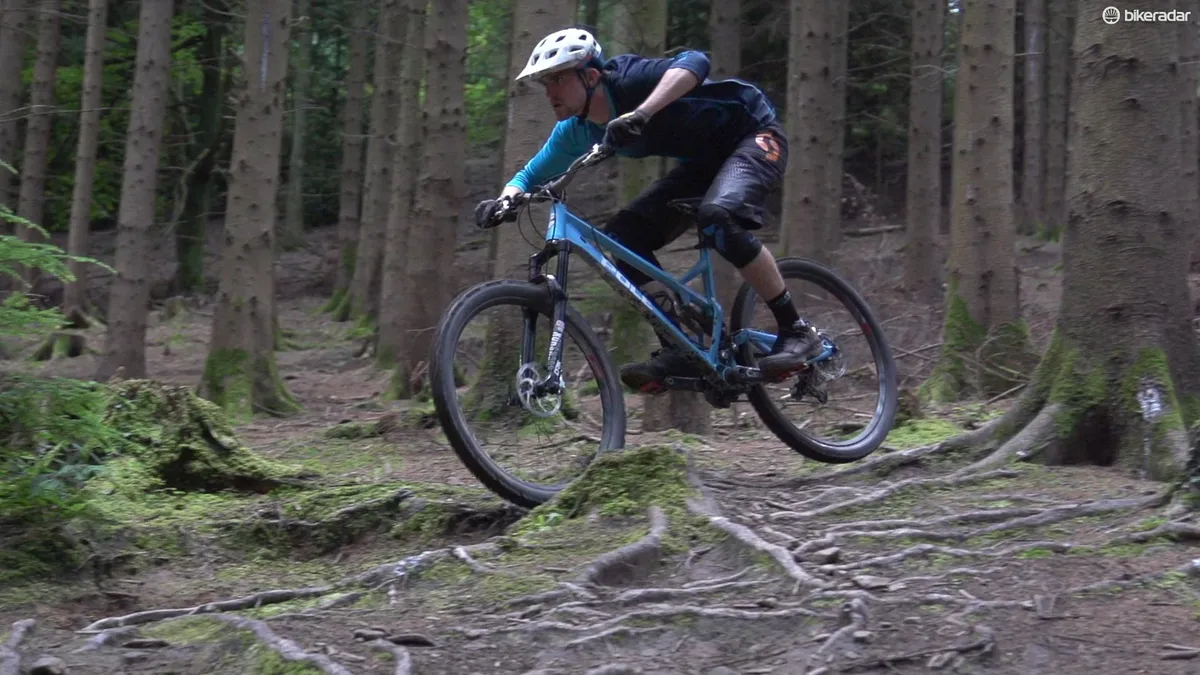
Both of us found it a little irritating when regularly manualling over puddles and other obstacles, but otherwise weren’t too fussed by the top-out. We would be a little concerned if we had dropped over a grand on a fork though, and the Lyrik has no such issue.
One track in particular brought the differences between the two forks into sharp focus. It was called (appropriately) Rim Dinger. I did four runs with each fork, and using the Fox 36 I got to the end with slightly sore hands every time, but after swapping to the Lyrik, this got markedly worse.
There’s noticeably more feedback and buzz through the bar form the Lyrik and the hand pain was setting in earlier. I was reaching the bottom needing to peel my fingers off the grips.
Surprisingly, the Lyrik also used more travel than the 36. When hucking into one particularly nasty rock garden, the Lyrik blew through all its travel rather unexpectedly, bottoming out. This is something I noticed when testing the Lyrik in the Alps; it occasionally dives through its travel a little more than I’d like, resulting in a bit of a trap-door feeling when compared to the super-supportive Fox.
This could be remedied to some extent by winding on more low-speed compression, but this makes the fork feel harsher still over small chatter and does little to hold it up through big impacts. The 36 never used too much travel, feeling totally composed and reliably supportive at all times.
2018 Fox 36 vs. RockShox Lyrik: the theory
So how can the Fox be both more sensitive and supportive at the same time?
Well, there may be less friction in the Fox’s chassis, but I think the main difference is in the damping. It feels like the Lyrik is a little less willing to move over small-bumps (which tend to induce low-speed movements), but the damping opens up more when faced with bigger (high speed) hits — perhaps a little too much for my liking.
The Fox is the opposite. It’s really sensitive over small bumps — resulting in superb tracking, sensitivity and comfort — but doesn’t give too much travel away when hitting things harder.
For those who are au fait with suspension terminology, I think the Lyrik has a more digressive damping curve. Basically, this means the damper opens up more at higher shaft speeds. There are advantages to this; the Lyrik bobs noticeably less under pedalling forces when left open and swallows some individual mid-sized hits with a little less drama and feedback.
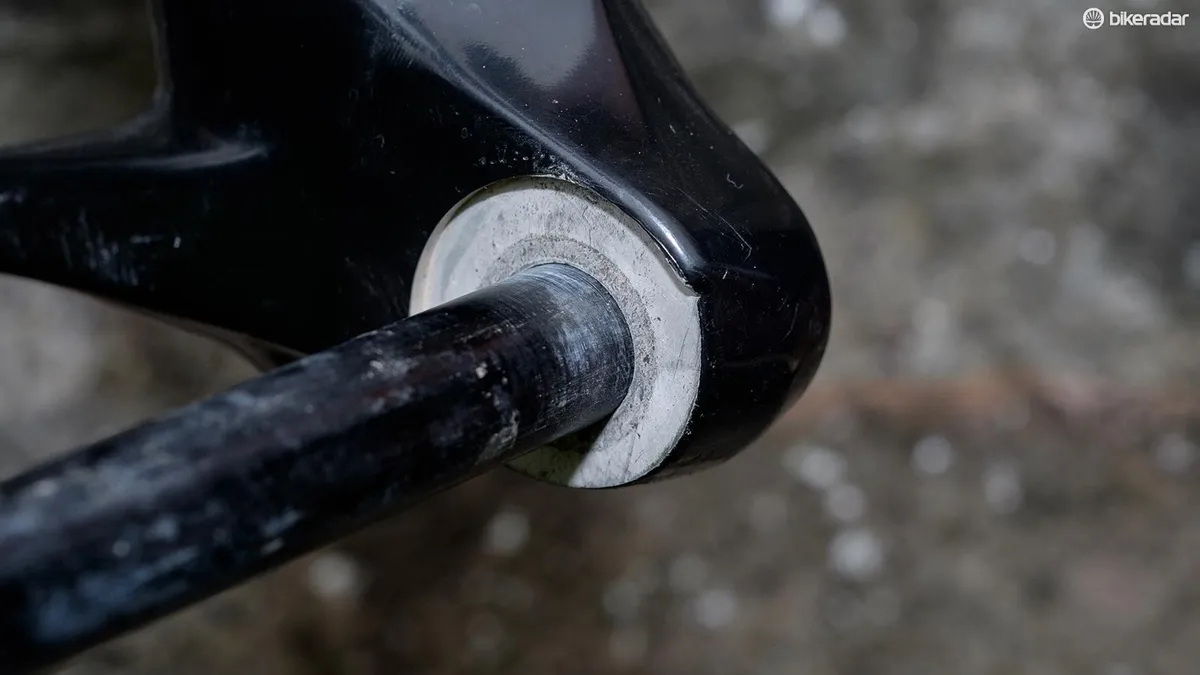
Fox’s EVOL spring is a big part of the story too. It has a larger negative spring volume relative to its positive chamber. This makes it more supple off the top and more supportive through the mid-stroke after sag, without ramping up too suddenly towards the end.
Of all the air springs I’ve tested, this one performs most like a coil; it’s traction-rich, supportive and predictable yet, of course, retains the tune-ability benefits of air.
The Lyrik is (as far as I can judge) a little stiffer. Perhaps this may have contributed to the extra feedback in my hands. Both forks flex more than you might think when pushed, but I rarely felt the flex was distracting in either fork. If you wanted more steering stiffness, you could fit a Torque cap hub to the Lyrik — but this is not an option for the Fox.
I should also point out that, after about 30 hours of riding, the Lyrik is closer to the end of its recommended service interval than the Fox, so its performance may have degraded more in that time. Therefore, if I had tested both forks fresh out of the box, the Lyrik may have been closer to the 36 in terms of tracking sensitivity. But this is conjecture.
2018 Fox 36 vs. RockShox Lyrik: what’s the bottom line?
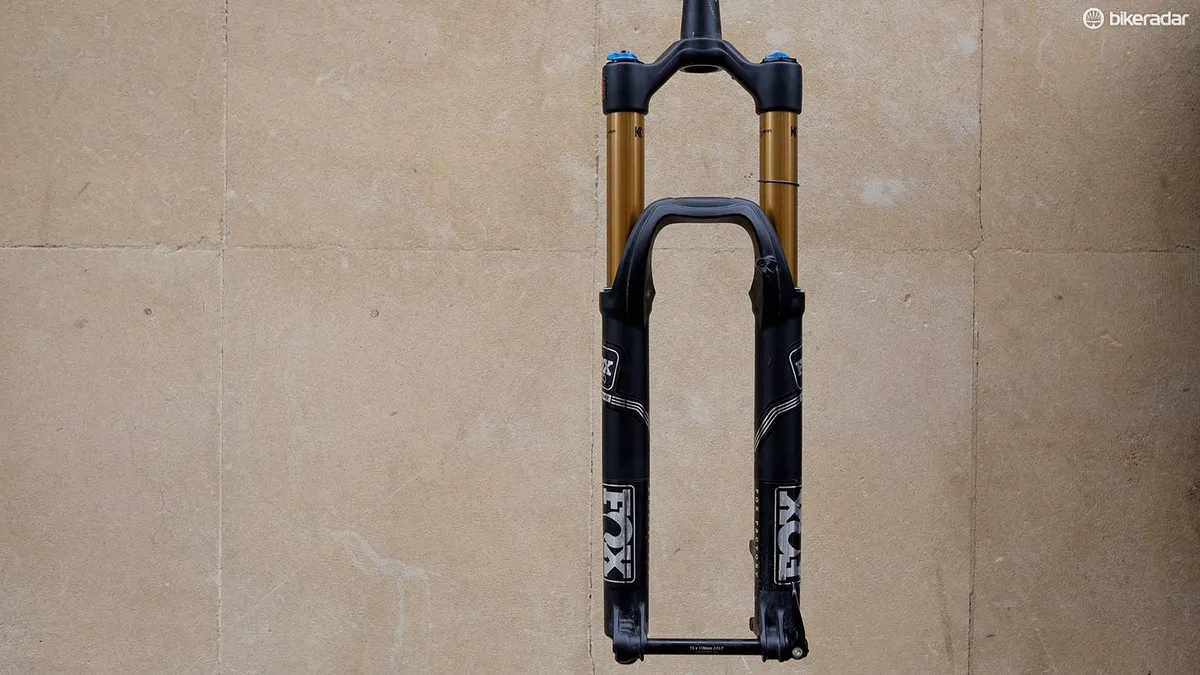
The Lyrik is a cracking fork, but based on my testing, the Fox 36 is just a bit better. It’s not perfect, the top-out issue is potentially irritating. But the Fox is at once more supportive and more sensitive than the Lyrik.
It inspires confidence, remaining higher in its travel and never diving unduly, yet at the same time providing a smoother ride and gobs of terrain-taming, traction-extracting sensitivity. Put simply, it’s superb. The longer service intervals and slightly lower weight help stack the balance in its favour too.
Having said that, in the UK at least, the Lyrik is a bit cheaper, and I’ve already seen them on sale with a healthy discount from the RRP. It’s a little stiffer too, especially in combination with torque cap hubs. Riders who require higher spring pressures may also find the Fox’s occasional top-out irritating, so the Lyrik may still be the better option for those who are concerned about this.
Still, the Fox 36 is a clear winner in this test. Meet the new benchmark.

